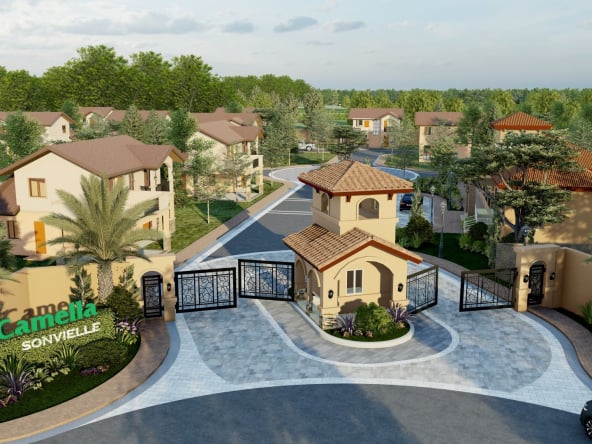
The housing market in the Philippines has been experiencing significant growth and changes in recent years. As we enter 2023, it is important to take a closer look at the current state of the housing market and what the future holds for prospective homebuyers and real estate investors.
Current Status of the Housing Market
What is happening with home sales in 2023?
The Philippines has been experiencing a booming housing market over the past few years, driven by a strong economy, a growing middle class, and increased demand for housing.
The country’s gross domestic product (GDP) has been steadily growing, and this has contributed to increased consumer confidence and spending power.
Various Factors Driving the Housing Market Up
Strong remittances from OFWs
One of the key factors driving the growth of the housing market is the continued influx of overseas Filipino workers (OFWs) who are sending remittances back home. These remittances have played a crucial role in supporting the local economy and have provided many families with the means to invest in real estate and pay off rising interest rates and mortgage rates.
Government Projects to Bolster the Housing Market
Additionally, the government has implemented various initiatives and policies to support the housing market. The “Build, Build, Build” program, launched in 2017, aims to boost infrastructure development and create more job opportunities, which in turn has a positive impact on the housing market.
Diversified Demand in Housing Types
In terms of property types, condominiums have been particularly popular in urban areas. The demand for condominium units has been driven by young professionals and families who are looking for convenient and modern living spaces with access to amenities and services.
However, there is also a growing interest in affordable housing options, such as townhouses and low-cost housing projects, to accommodate the needs of a wider range of buyers in the housing market.
Challenges in the Housing Market
Home Prices Remain High
Despite the positive growth, there are still challenges that the housing market in the Philippines faces. One of the main challenges is the lack of affordable housing options, especially in densely populated urban areas.
Rapid urbanization and limited land availability make it difficult to meet the demand for affordable housing, resulting in rising housing prices and limited options for low-income families. In addition, interest rates and there is no sign of a decline in the prices of properties.
Low inventory of houses
Since the housing market crash of 2008 and the great recession, when new home development fell precipitously, there has been a problem with low housing inventory. In 2023, housing experts have determined that it still has not entirely recovered.
The unsold inventory remains low as more and more buyers seek affordability and the current sales pace stays stagnant.
In contrast to earlier downturns, the housing supply has remained stable at close to historic lows, supporting demand and maintaining higher home prices. With a low inventory, home builders are facing challenges in building more houses in the current economy.
High Cost of Financing for Homeowners and Buyers
Another challenge is the high cost of financing for homebuyers. Interest rates for housing loans can be relatively high, making it difficult for some individuals and families to qualify for loans or afford monthly mortgage rates.
The government and financial institutions need to work together to address this issue and provide more affordable financing options.
You only need to look at the state of the US housing market to see this trend. Due to rising mortgage rates and rising property prices, which together continued to exacerbate the housing affordability dilemma, the buyer-seller standoff remained stable in May despite concerns about continuing inflation, bank sector turbulence, the debt limit drama, and an oncoming recession.
Mortgage rates are still high partly because of the Federal Reserve, which on May 3 decided to boost its benchmark interest rates by 25 basis points in an aggressive attempt to curb inflation. Since March 2022, the central bank has raised interest rates 10 times in a row.
The most recent increase came on May 3. Long-term mortgage rates like 30-year fixed-rate mortgages are indirectly impacted by Fed rate increases.
Housing Market Forecast and Outlook for 2023 and Beyond
Looking ahead to the future, the housing market in the Philippines is expected to continue its growth trajectory, albeit with some potential adjustments. The government’s focus on infrastructure development is set to open up new areas for real estate development, providing opportunities for both residential and commercial projects.
This expansion will help alleviate the pressure on urban areas and create more affordable housing options.
Additionally, advancements in technology, a recovering economy, and changing consumer preferences are likely to shape the future of the housing market. With the rise of remote work and the increasing importance of digital connectivity, there may be a shift in the demand for housing towards more suburban or rural areas, as people are no longer tied to living close to their workplaces.
This trend could lead to the development of satellite cities and the revitalization of smaller towns and provinces.
Sustainability and eco-friendly housing solutions are also expected to gain traction in the coming years. With the growing awareness of climate change and environmental issues, developers and prospective buyers are increasingly prioritizing energy-efficient and environmentally friendly housing options.
This shift may lead to the integration of green construction practices and the incorporation of renewable energy sources in the housing market.
Buyers can Expect More Changes and Growth in the Housing Market
In conclusion, the housing market in the Philippines has been experiencing significant growth and changes in recent years. The current state of the market is characterized by increased demand, particularly for condominiums, driven by a strong economy and government initiatives.
However, challenges such as the lack of affordable housing options and high home prices need to be addressed.
Looking ahead, you can expect a housing boom, with infrastructure and urban development and changing consumer preferences shaping its future. Despite affordability challenges, the expansion of infrastructure will create new opportunities for real estate development, while advancements in technology and sustainability will drive changes in the housing market.
With careful planning and collaboration between the government, developers, and financial institutions, the future of the housing market in the Philippines looks promising, offering opportunities for both prospective buyers and investors alike.

Check out our House and Lot for Sale Properties
Discover our house and lot for sale properties in the Philippines


